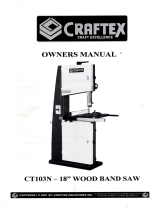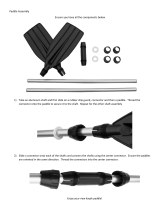Page is loading ...

FormNo.3390-595RevA
MM-650E-SandMM-850E-S
MortarMixer
ModelNo.68012C—SerialNo.315000001andUp
ModelNo.68018C—SerialNo.315000001andUp
ModelNo.68019C—SerialNo.315000001andUp
G020896
Registeratwww.Toro.com.
OriginalInstructions(EN)
*3390-595*A

WARNING
CALIFORNIA
Proposition65Warning
Thisproductcontainsachemicalorchemicals
knowntotheStateofCaliforniatocausecancer,
birthdefects,orreproductiveharm.
Useofthisproductmaycauseexposureto
chemicalsknowntotheStateofCalifornia
tocausecancer,birthdefects,orother
reproductiveharm.
Ifyoubelievethatyourmachinehasadefectwhichcould
causeacrashorcouldcauseinjuryordeath,youshould
immediatelyinformtheNationalHighwayTrafcSafety
Administration(NHTSA)ifyouliveintheUnitedStates,
orTransportCanadaifyouliveinCanada,inadditionto
notifyingTheToroCompany.
IfNHTSAorTransportCanadareceivessimilarcomplaints,
itmayopenaninvestigation,andifitndsthatasafetydefect
existsinagroupofmachines,itmayorderarecallandremedy
campaign.However,NHTSAorTransportCanadacannot
becomeinvolvedinindividualproblemsbetweenyou,your
dealer,orTheToroCompany.
•TocontactNHTSA,youmaycalltheVehicle
SafetyHotlinetoll-freeat1-888-327-4236(TTY:
1-800-424-9153);gotohttp://www.safercar.gov;orwrite
to:Administrator,NHTSA,1200NewJerseyAvenue,
SEWestBuilding,Washington,DC20590.Youcanalso
obtainotherinformationaboutmotorvehiclesafetyfrom
http://www.safercar.gov.
•TocontactTransportCanada,youmaycall
1-800-333-0510or(819)994-3328;goto
http://www.tc.gc.ca/roadsafety/;writeto:Road
SafetyandMotorVehicleRegulationDirectorate,
TransportCanada,TowerC,PlacedeVille,330
SparksStreet,Ottawa,Ontario,K1A0N5;oremail
R[email protected].ca.
Introduction
Thismachineisdesignedtomixmortar,plaster,reproong
material,grout,andothersmall-grainedcementproducts.A
vehicleequippedwithanappropriatepintlehitchorballhitch
cantowthemachine..
Readthisinformationcarefullytolearnhowtooperateand
maintainyourproductproperlyandtoavoidinjuryand
productdamage.Youareresponsibleforoperatingthe
productproperlyandsafely.
YoumaycontactTorodirectlyatwww .Toro.comforproduct
andaccessoryinformation,helpndingadealer,ortoregister
yourproduct.
Wheneveryouneedservice,genuineToroparts,oradditional
information,contactanAuthorizedServiceDealerorToro
CustomerServiceandhavethemodelandserialnumbersof
yourproductready.Writethenumbersinthespaceprovided.
1
G020900
2
Figure1
1.Modelandserialnumber
location
2.Vehicleidentication
number(VIN)location
ModelNo.
SerialNo.
Thismanualidentiespotentialhazardsandhassafety
messagesidentiedbythesafetyalertsymbol(Figure2),
whichsignalsahazardthatmaycauseseriousinjuryordeath
ifyoudonotfollowtherecommendedprecautions.
Figure2
1.Safetyalertsymbol
©2014—TheToro®Company
8111LyndaleAvenueSouth
Bloomington,MN55420
2
Contactusatwww.Toro.com.
PrintedintheUSA
AllRightsReserved

Thismanualuses2wordstohighlightinformation.
Importantcallsattentiontospecialmechanicalinformation
andNoteemphasizesgeneralinformationworthyofspecial
attention.
TheDOTtireinformationislocatedonthesideofeachtire.
Thisinformationgivesloadandspeedratings.Replacement
tiresshouldhavethesameorbetterratings.
Note:Thevariousmachinesinthismanualhavedifferent
weights;refertoSpecications(page13)toensurethatthe
tiresonyourmachinemeetorexceedtheweightrequirements
ofyourmachine.
Contents
Safety...........................................................................4
SafeOperatingPractices...........................................4
SafetyandInstructionalDecals.................................7
Setup............................................................................8
1InstallingtheDumpHandle...................................8
2InstallingtheTowPole..........................................9
3InstallingtheSafetyChain......................................9
4InstallingtheLightAssembly.................................10
ProductOverview.........................................................12
Controls...............................................................12
Specications........................................................13
Operation....................................................................14
PreparingtoTowtheMachine..................................14
ExtendingtheAxle.................................................17
TowingtheMachine...............................................18
PreparingtoUsetheMachine...................................18
OpeningandClosingtheCowl.................................19
PoweringtheMachine.............................................19
StartingandStoppingtheMotor...............................20
ControllingthePaddles...........................................20
MixingtheMaterial.................................................21
UsingtheDrum.....................................................22
AdjustingthePaddleBlades.....................................22
Maintenance.................................................................24
RecommendedMaintenanceSchedule(s)......................24
PremaintenanceProcedures........................................24
PreparingtheMachineforMaintenance.....................24
RemovingandInstallingtheDividerPlate..................24
Lubrication...............................................................25
LubricatingtheBearingsandSeals............................25
LubricatingtheMotorBearings................................26
LubricatingtheDriveChain.....................................26
BeltMaintenance......................................................27
ServicingtheBelts..................................................27
ReplacingtheBelts.................................................28
AligningthePulleys................................................29
DriveChainMaintenance............................................30
CheckingandAdjustingtheDriveChain....................30
ReplacingtheLightBulbs............................................31
ReplacingtheRear-facingBulbs................................31
ReplacingtheSide-facingBulbs................................31
Cleaning...................................................................32
CleaningtheMachine..............................................32
Storage........................................................................33
StoringtheMachine................................................33
Troubleshooting...........................................................34
Schematics...................................................................35
3

Safety
Improperlyusingormaintainingthemachinecanresult
ininjury.Toreducethepotentialforinjury,complywith
thesesafetyinstructionsandalwayspayattentiontothe
safetyalertsymbol,whichmeans:
Caution
,
W ar ning
,
or
Danger
—personalsafetyinstruction.Failureto
complywiththeinstructionmayresultinpersonalinjury
ordeath.
SafeOperatingPractices
Thisproductiscapableofamputatinghands.Alwaysfollow
allsafetyinstructionstoavoidseriousinjuryordeath.
WARNING
Machiningorhandlingstone,masonry,concrete,
metal,andothermaterialscangeneratedust,mists,
andfumescontainingchemicals,suchassilica,
knowntocauseseriousorfatalinjuryorillness,
suchasrespiratorydisease,silicosis,cancer,birth
defects,orotherreproductiveharm.
•Controldust,mist,andfumesatthesource
wherepossible.Usewaterfordustsuppression,
whenfeasible.
•Usegoodworkpracticesandfollowthe
recommendationsofthemanufacturer
orsupplier,CCOHS,OSHA,andother
occupationalandtradeassociations.
•Alwaysfollowrespiratoryprecautions.
•Whenthehazardsfrominhalationcannotbe
eliminated,theoperatorandanybystanders
shouldweararespiratorapprovedbyCCOHSor
OSHAforthematerialbeinghandled.
Training
•ReadtheOperator'sManualandothertrainingmaterial.If
theoperator(s)ormechanic(s)cannotreadorunderstand
theinformation,itistheowner'sresponsibilitytoexplain
thismaterialtothem.
•Becomefamiliarwiththesafeoperationoftheequipment,
operatorcontrols,andsafetysigns.
•Alloperatorsandmechanicsshouldbetrained.The
ownerisresponsiblefortrainingtheusers.
•Neverletchildrenoruntrainedpeopleoperateorservice
theequipment.Localregulationsmayrestricttheageof
theoperator.
•Theowner/usercanpreventandisresponsiblefor
accidentsorinjuriestopeopleordamagetoproperty.
Towing
Checkwithyourlocalcountyorstatetowingsafety
regulations,inadditiontomeetingTransportCanada(or
DepartmentofTransportationifintheU.S.)towingsafety
regulations,beforetowingthemachine.
•Inordertoreducethepossibilityofanaccidentwhile
transportingthemachineonpublicroads,makesure
thetowingvehicleismechanicallysoundandingood
operatingcondition.
•Shutdowntheenginebeforetransportingthemachine.
•Whentowingwithaballhitch,ensurethattheballhitch
youareusingisthepropersizeforthehitchcoupleron
themachine.
•Whentowingwithapintlehitch,ensurethattheeyeof
thetowpoleisthecorrectdimensionforthepintlehook.
•Inspectthehitchandcouplingforwear.Nevertowthe
machinewithdamagedordefectivehitches,couplings,
chains,orothercomponents.
•Checkthetireairpressureonthetowingvehicleandthe
machine.
•Checkthetiretreadandsidewallfordamageandwear.
•Properlyattachthesafetychainstothetowingvehicle.
•Ensurethatthedirectionalandbrakelightsareworking
properly.
•Ensurethatthedirectional,backup,andbrakelightsof
thetowvehicleareworkingproperly.
•Beforetowingchecktomakecertainyourmachineis
correctlyandsecurelyattachedtothetowingvehicle.
•Ensurethatthesafetychainsareproperlysecuredtothe
vehicle,andleaveenoughslackforturning.
•Donotcarryanymaterialinthemachinewhentowing.
•Avoidsuddenstopsandstarts.Thiscancauseskidding,
orjackkning.Smooth,gradualstartsandstopswill
improvetowing.
•Avoidsharpturnstopreventrolling.Towonlywitha
vehiclethathasahitchdesignedfortowing.Donot
attachtowedequipmentexceptatthehitchpoint.
•Donottowthemachinefasterthan88km/h(55mph).
•Usecautionwhenbackingup;useaspotteroutsidethe
vehicletoguideyou.
•Donotallowanyonetositorrideonthemachine.
•Disconnectthemachinefromthetowvehiclebefore
usingit.
•Placechockblocksunderneaththetirestopreventthem
fromrollingwhilethemachineisparked.
Preparation
Becomefamiliarwiththesafeoperationoftheequipment,
operatorcontrols,andsafetysigns.
•Useonlyaccessoriesandattachmentsapprovedbythe
manufacturer.
•Wearpersonalprotectiveequipmentandappropriate
clothing,includingthefollowing:
4

–Hardhat
–Respiratorordustmask
–Faceshieldorsafetyglasses
–Hearingprotection
–Safetyshoes
–Longpants
–Shirtwithlongsleevesbuttonedatthewrists
–Tight-ttinggloveswithoutdrawstringsorloosecuffs
•Securelonghair,looseclothing,orjewelrythatmayget
tangledinmovingparts.
•Operatingtheequipmentsafelyrequiresthefullattention
oftheoperator.Donotwearradioormusicheadphones
whileoperatingthemachine.
•Ensurethatthemachineisonalevelsurfacebefore
operatingthemachine.
•Chockthetiresofthemachinetopreventunintended
movement.
•Beforeeveryuse,dothefollowing:
–Inspectthecoupler,ball,andhitch.
–Ensurethatalllightsarefunctioningproperly(if
equippedwithalightkit).
–Ensurethatthetiresareproperlyinatedas
recommended.
–Ensurethatthelugnutsaretightandtorqued
properly.
–Ensurethatthemachineisproperlysecured.
Operation
•Neverrunthemachineinapoorlyventilatedorenclosed
areawithoutproperrespiratoryprotection.Dustfrom
materialsbeingmixedcanbeveryharmfultooperators
andbystanders.
•Onlyoperatethemachineingoodlightingconditions.
•Beforestartingthemachine,makesurethatthereareno
personsorobstaclesnearorunderthemachine.
•Neverleavearunningmachineunattended.Alwaysstop
themotorandverifythatallmovingpartshavestopped.
•Chockthetiresofthemachineorkeepitattachedtothe
towingvehiclewhenitisnotinuse,topreventitfrom
rolling.
•Keephandsawayfromanymovingparts.Keepfeetaway
fromthetiresandthefrontpost.
•Donotoperatethemachineoutdoorsintherain.
•Donotoperatethemachineundertheinuenceof
alcoholordrugs.
•Ensurethattheareaisclearofotherpeopleorpetsbefore
operatingthemachine.Stopthemachineifanyoneenters
thearea.
•Neverplaceyourhandsoranysolidobjectintothedrum
whenthemachineisinoperation.
•Donottouchpartswhichmaybehotfromoperation.
Allowthemtocoolbeforeattemptingtomaintain,adjust,
orservicethemachine.
•Nevermovethemachinewhilethemotorisrunning.
•Keepthecowlclosedandlatchedduringoperation.
•Ensurethatalltheguardsandshieldsaresecurelyinplace
beforeoperatingthemachine.
•EnsurethattheOn/OffswitchisintheOffposition
beforeconnectingthemachinetotheelectricalsource.
•Ifthemixingpaddlesstrikeaforeignobjectorifthe
machineshouldstartmakinganunusualnoiseor
vibration,stopthemotorandemptythedrum.Waitfor
allmovingpartstocometoacompletestopandcool.
Vibrationisgenerallyawarningoftrouble.Inspectfor
cloggingordamage.Cleanandrepairand/orreplace
damagedparts.
•Lightningcancausesevereinjuryordeath.Ifyousee
lightningorhearthunderinthearea,donotoperatethe
machine;seekshelter.
5

MaintenanceandStorage
•Beforeperformingmaintenance,dothefollowing:
–Parkthemachineonlevelground.
–Stopthemotor.Waitforallmovementtostopbefore
adjusting,cleaning,orrepairing.
–Letthemotorcoolbeforeperformingmaintenance
orstoringthemachine.
–Unplugthemachinebeforemakinganyrepairs.
•Neverlubricate,service,repair,oradjustthemachine
whileitisrunning.
•Keepequipmentmaterialsclearfromthemotor.
•Neverallowuntrainedpersonneltoservicethemachine.
•Keephands,feet,andclothingawayfrommovingparts.
Ifpossible,donotmakeadjustmentswiththemotor
running.
•Keepallpartsingoodworkingconditionandallhardware
tightened.Replaceallwornordamageddecals.
•Removeanybuildupofgrease,oil,ordebrisfromthe
machine.
•Donotmodifytheelectricalconnectorsorwiring.
•Donotconnectthegroundcircuitofthemachinetothe
energizedcircuitoftheelectricalsource.
•Donottamperwithsafetydevices.
•Chockthetireswhenstoringthemachine.
•Keepallnuts,bolts,screws,andhoseclampssecurely
tightened.Keepequipmentingoodcondition.
•UseonlygenuineTororeplacementpartstoensurethat
theoriginalstandardsaremaintained.
6

SafetyandInstructionalDecals
Safetydecalsandinstructionsareeasilyvisibletotheoperatorandarelocatednearanyareaofpotential
danger.Replaceanydecalthatisdamagedorlost.
125–8175
1.ReadtheOperator’sManualforinformationongreasing
themachine.
125–8216
1.ReadtheOperator’s
Manualforinformationon
howtotowthemachine.
2.Warning—limittowing
speedtolessthan55mph
/88km/h.
127–1652
1.Warning—readthe
Operator’sManual.
3.Entanglementhazardat
paddles—stopthemotor
andwaitforallmoving
partstostopbefore
servicingthemachine.
2.Handandarm
entanglementatthe
beltdrive;crushinghazard
ofhand;entanglement
hazardofhandatthe
shaft—keephandsaway
frommovingparts;keep
allguardsandsafetiesin
place.
4.Shockhazard—makesure
themachineisgrounded
beforeoperation.
7

Setup
LooseParts
Usethechartbelowtoverifythatallpartshavebeenshipped.
ProcedureDescription
Qty.
Use
Dumphandle1
Bolt2
1
Nut2
Installthedumphandle.
2
Towpolekit(soldseparately)
1Installthetowpole.
Safetychain
1
3
Connectinglink
2
Installthesafetychain.
Grommet
1
Firtreeclip1
Cableclamp
5
Bracket2
Licenseplateholder1
Leftlightassembly
1
Rigtlightassembly1
Frontlightassembly2
Nuts11
Bolts
7
Edgeclips4
Wiringharness1
Grommet,small
2
4
Cableties
5
Installthelightassembly.
1
InstallingtheDumpHandle
Partsneededforthisprocedure:
1Dumphandle
2Bolt
2Nut
InstallingtheDumpHandletotheDrum
1.Cutthecabletiestoremovethedumphandlefrom
theundersideofthegrate.
2.Positionthedumphandlesothattheboltholesalign
withtheboltholesinthedrum(Figure3).
G020944
Figure3
3.Insertthe2boltsthroughtheboltholesinthedump
handleandthedrum(Figure3).
8

4.Installanutontoeachbolt,andtightenthembyhand
topreventcross-threading.
5.Tightenthenutswithawrenchwhileusinganother
wrenchtokeeptheboltsfromspinning.
2
InstallingtheTowPole
Partsneededforthisprocedure:
1
Towpolekit(soldseparately)
InstallingtheTowPoletotheMachine
Note:Thetowpoleispurchasedseparatelyandincludesthe
nutandboltneededforinstallation.SeeaToroauthorized
dealerforthetowpoleforyourmachine.
Themachinehasthefollowingtowpoleoptions:
HitchTypeLength
50mm(2inch)ball—stamped79cm(31inches)
50mm(2inch)ball—forged79cm(31inches)
Pintle
79cm(31inches)
1.Removetheboltandnutfromthetowpole(Figure4).
5
1
2
4
6
3
G019804
Figure4
1.Towpole4.Bolthole
2.Frontpost
5.Frametting
3.Bolt6.Nut
2.Slidethetowpoleforwardandaligntheholeinthe
polewiththeholeintheframetting(Figure4).
3.Inserttheboltthroughtheholesinthettingandthe
pole(Figure4).
4.Threadthenutontotheboltandtightenthemuntil
theyaretightagainsttheframetting(Figure4).
Note:Iftheself-lockingnyloninsertinthelocknut
wearswithuse,replacethenutwithanewGrade5or
Grade8locknut.
3
InstallingtheSafetyChain
Partsneededforthisprocedure:
1
Safetychain
2
Connectinglink
InstallingtheSafetyChain
1.Formahookontheendofabendablepieceofrod
orstiffwire(notincluded),andinsertitthroughboth
keyholesinthefrontpostofthemachine(Figure5A).
A
B
C
D
g019883
2
3
4
3
1
Figure5
1.Keyhole
3.Safetychain
2.Rodorwire(notincluded)4.Connectinglink
2.Attachthesafetychaintothelengthofrodorwire
(Figure5A).
3.Pulltherod,orwire,andthesafetychainthroughboth
keyholes(Figure5B).
Note:Ensurethatapproximatelyequallengthsof
safetychainextendfromeithersideofthefrontpost.
InstallingtheConnectingLinks
1.Aligntheconnectinglinktothelastlinkinoneendof
thesafetychain(Figure5D).
9

2.Inserttheconnectinglinkthroughthechainlinkuntil
theconnectinglinksnapsclosed.
3.Repeatsteps1and2toinstalltheotherconnectinglink
intheotherendofthesafetychain.
4
InstallingtheLightAssembly
Partsneededforthisprocedure:
1
Grommet
1Firtreeclip
5
Cableclamp
2Bracket
1Licenseplateholder
1
Leftlightassembly
1Rigtlightassembly
2Frontlightassembly
11Nuts
7
Bolts
4Edgeclips
1Wiringharness
2
Grommet,small
5
Cableties
InstallingtheRearLightAssemblies
1.Installthebracketsontotheframeusing4bolts,2
cableclamps,and4nutsasshowninFigure6.
Note:Thecableclampsshouldbeinstalledonthe
boltsclosertothemiddleofthemachine.
Figure6
Rightbracketshown
1.Nut3.Bracket
2.Cableclamp
4.Bolt
2.Placethelicenseplateholderontotheleftlamp
assemblyandsecurethemtotheleftbracketusing2
nutsasshowninFigure7.
Note:Placetheterminalforthewiringharnessonthe
outsideprongofthewiringharnessbeforesecuringthe
nut(Figure7).
g0278 56
Figure7
1.Edgeclip4.Licenseplateholder
2.Wiringharness
5.Leftlightassembly.
3.Firtree(attachedtowiring
harness)
3.Insertthertreethatisattachedtothewiringharness
totheopenholeonthebracket(Figure7).
4.Securethewiringharnesstothesideofthemachine
usinganedgeclip(Figure7).
5.Attachtherightlightassemblytotherightbracketas
showninFigure8using2nuts.
Note:Placetheterminalforthewiringharnessonthe
outsideprongofthewiringharnessbeforesecuringthe
nut(Figure8).
Figure8
6.Insertthertreethatisattachedtothewiringharness
totheopenholeonthebracket(Figure8).
7.Securethewiringharnesstothesideofthemachine
usinganedgeclip(Figure8).
10

RoutingtheWiringHarness
1.Securethewiringharnesstotherearofthemachine
using2cableclamps,2bolts,and2nutsasshownin
Figure9.
Figure9
1.Bolt3.Nut
2.Cableclamp
4.Wiringharness
2.Routethewiringharnessalongtheleftsideofthe
frameasshowninFigure10.
Figure10
1.Edgeclip3.Edgeclip
2.Cableclampassembly
3.Securethewiringharnesstotheleftsideoftheframe
using1edgeclipsecuredontothemiddlesupport
bracketasshowninFigure10;Callout1.
4.Securethewiringharnesstotheleftsideoftheframe
using1cableclamp,1bolt,and1nut(Figure10);
Callout2.
5.Securethewiringharnesstothefrontoftheunitwith
1edgeclipasshowninFigure10;Callout3.
6.Securetheexcessofthewiringharnesswiththe5zip
ties.
7.Routtheremainderofthewiringharnessthroughthe
horizontalpostunderneaththedrum.
InstallingtheFrontLightAssemblies
1.Feedthesmallersectionofthewiringharnessup
throughthehorizontalpostbelowthedrum,asshown
inFigure11.
1 2
3 4
g027861
Figure11
1.Nut(partofthefrontlight
assembly)
3.Grommet,small
2.Wiringharness4.Lightassembly
2.Placethesmallgrommetsoverthewiringharnessends
thatdonothavetheterminalsconnectedandpushthe
grommetsintothelowerhole(Figure11).
3.Insertthelightassemblyintotheupperhole,through
thewiringharnessterminals,andsecurethelightswith
theboltsthatcameattachedtothelightassemblies
(Figure11).
4.Pulltherestofthewiringharnessoutthroughthehole
inthefrontpostofthemachine,throughthelarge
grommet,andinsertthelargegrommetinthehole
(Figure12).
1
2
3
g027859
Figure12
1.Firtree3.Wiringharness
2.Grommet,large
5.Insertthertreeintotheholenexttothegrommet
andsecurethewiringharnesstothisclip(Figure12).
11

ProductOverview
G020897
1
2
3
4
5
6
8
9
10
12
13
14
15
16
7
11
17
18
Figure13
1.Rearcowl
7.Clutchlever
13.Drum
2.Frontcowl8.Drumlatch
14.Chute
3.Grate
9.Frontpost15.Axle
4.Bagsplitter10.T owpole16.Wheel
assembly
5.Dumphandle11.Lightingwiring
harness
17.Light(2)
6.Gratelifterarm12.Safety-chain
keyhole
18.Cowllatch
Controls
Becomefamiliarwithallthecontrolsbeforeyoustartthe
motorandoperatethemachine.
ClutchLever
Theclutchleverisusedtoengageanddisengagemotor
powertothepaddles.
G019875
1
Figure14
1.Clutchlever
DrumLatch
Thedrumlatchsecuresthedrumtothemixposition(upright)
formixingoperationsandwhentransportingthemachine.
1
G019877
Figure15
1.Drumlatch
DumpHandle
Usethedumphandletorotatethedrumtothedumpposition
andtorotatethedrumtothemixposition(upright).
G019878
1
Figure16
1.Dumphandle
12

MotorControls
Thefollowingmotorcontrolsarefoundonallmodels:
3
Figure17
1.Thermal-overload
protectorresetbutton
3.Powercord
2.On/Offswitch
MotorOn/OffSwitch
TheOn/Offswitch(Figure18)allowstheoperatorofthe
machinetostartandstopthemotor.Thisswitchislocated
onthefrontofthemotor.Itismarked(ON)and(OFF).
RotatetheOn/OffswitchtotheOnpositiontostartandrun
themotor.RotatetheOn/OffswitchtotheOffposition
tostopthemotor.
g020669
1
Figure18
1.MotorOn/Offswitch
Specications
Note:Specicationsanddesignaresubjecttochangewithoutnotice.
MachineSpecications
Model
68012C68018C68019C
BatchCapacity0.17cubicm(6.0cubicft)0.23cubicm(8.0cubicft)0.23cubicm(8.0cubicft)
TotalVolume
0.20cubicm(6.9cubicft)0.25cubicm(9.0cubicft)0.25cubicm(9.0cubicft)
Length
(withouttowpole)
163cm(64inches)193cm(76inches)193cm(76inches)
Width
86cm(34inches)86cm(34inches)86cm(34inches)
Height
137cm(54inches)137cm(54inches)137cm(54inches)
Weight
250kg(550lb)275kg(605lb)275kg(605lb)
Axle
86to117cm(34to46inches)
extendable
86to117cm(34to46inches)
extendable
86to117cm(34to46inches)
extendable
Motor1.5hpBaldorElectric1.5hpBaldorElectric2hpBaldorElectric
13

Operation
Important:Beforeoperating,removeanydebrisfrom
themachine.Ensurethattheareaisclearofpeople.
PreparingtoTowtheMachine
Important:Ensurethatyourtowvehiclehastowing
capacityfortheweightofthemachine.
Important:UseaClass2orlargerreceiver.
Note:Ensurethatyourtowvehiclehastheappropriatehitch
totowthemachine;optionsincludea50mm(2inch)ball
hitchorapintlehitch.
Note:Ensurethattheelectricalconnectorofthetowvehicle
iscompatiblewiththeelectricalconnectorofthemachine.
Themachineusesastandard4-atplug.Ifyourtowvehicle
hasadifferenttypeofplug,obtainanadapterfroman
automotivepartsstore.
1.Ensurethatthemotorisstopped,themachineis
unplugged,andthedrumisempty.
2.Ifthedrumhasaccumulatedanywater,dumpthe
drum;refertoDumpingtheDrum(page22),steps1,
3,4,and5.
3.Usingthedumplever,positionthedrumsothatitisin
themixposition(upright)andlocked.
4.Closethecowlandsecurethecowllatches(Figure19).
G019741
Figure19
5.Extendtheaxle;refertoExtendingtheAxle(page17).
CheckingtheTiresandWheels
ServiceInterval:Beforeeachuseordaily—Inspectthetires
andwheels.
WARNING
Failuretomaintaincorrecttirepressuremayresult
intirefailureandlossofcontrol,resultingin
propertydamageandseriousinjuryordeath.
•Checkthetirepressurefrequentlytoensure
properination.Ifthetiresarenotinatedto
thecorrectpressure,theywillwearprematurely.
•Inspectthetireconditionbeforetowingand
afteranyoperatingaccident.
TheDOTtireinformationislocatedontheside
ofeachtire.Thisinformationgivesloadandspeed
ratings.Replacementtiresshouldhavethesame
orbetterratings.Formoreinformationgoto
http://www.nhtsa.gov/Vehicle+Safety/Tires.
Note:Thevariousmachinesinthismanualhavedifferent
weights;refertoSpecications(page13)toensurethatthe
tiresonyourmachinemeetorexceedtheweightrequirements
ofyourmachine.
1.Visuallyinspectthetiresfordamageandwear(Figure
20andFigure21).
G020836
Figure20
1.Exampleoftirewearcausedbyunderination
Figure21
1.Exampleoftirewearcausedbyoverination
2.Ensurethatthetiresareinatedtothecorrectair
pressure.ThefollowingTireAirPressuretableshows
14

theappropriateairpressureforthetiresasinstalledat
thefactory.
Important:Alwayschecktheinformation
ontheactualtiresforthecorrectairpressure
requirement.
Important:Themostcommoncauseoftire
troubleisunder-ination.Maintainfullair
pressure.
TireAirPressure
ModelTirepressure
68012CMax414kPa(60psi)
68018C,68019CMax241kPa(35psi)
3.Ensurethatthewheellugnutsaretorquedto108to
122N-m(80to90ft-lb).
Note:Checkthetorqueofthewheellugnutsinitially
andaftertowing.
Note:Torquethelugnutsinthesequenceshownin
Figure22.
1
2
3
4
G021 107
Figure22
HitchingaMachinewithaStampedBall
Coupler(optionalkit)
1.Applychassisgreasetothesocketofthecouplerand
theareaoftheclampthatcontactstheball.
2.Oilthepivotpointsandslidingsurfacesofthecoupler
withSAE30motoroil.
3.Openthecouplerlatch(Figure23).
A
B
C
G020359
2
1
Figure23
1.Bail
2.Safetypin
4.Positionthecouplerontopofthehitchball(Figure23).
5.Closethecouplerlatch(Figure23).
6.Openthebailonthesafetypin,andinsertthepin
throughtheholeinthelatch(Figure23).
7.Rotatethefreeendofthebailovertheendofthesafety
pinthatisprotrudingthroughthelatch(Figure23).
8.Connectthewireplugofthetowvehicletothewire
plugofthemachine.
15

HitchingaMachinewithaPintleHitch
Coupler(optionalkit)
1.Removethepinfromthepintlehitchandopenit
(Figure24).
G019809
Figure24
2.Positiontheringonthetowpoleontothehookofthe
pintlehitch(Figure24).
3.Closethetopofthepintlehitchandsecureitwiththe
pin(Figure24).
4.Connectthewireplugofthetowvehicletothewire
plugofthemachine.
ConnectingtheSafetyChainstothe
TowVehicle
Connectthesafetychaintothemachineandthetowvehicle
asfollows:
1.Pullthesafetychainthroughtheslotsinthekeyholes
locatedinthefrontpostofthemachine,sothatthere
isjustenoughslackoneachsideforturningaround
cornerswhentowingthemachineFigure25).
Note:Stowtheexcesschaininsidethebottomofthe
frontpostbypushingitintothekeyholesandlatching
theappropriatelinksintothekeyholeslots.
2.Crossbothlengthsofchainunderthetowpole.
Note:Crossingthechainsdecreasesthechancesof
thefrontofthemachinedroppingtothegroundifthe
hitchdoesnotholdtheconnection.
1
2
3
G021 177
Figure25
1.Connectinglinks3.Chaincrossedundertow
pole
2.Keyholesinfrontpost
3.Connecteachlengthofchaintothesafetychain
mountingpointonthetowvehiclewiththeconnecting
links(Figure26).
G021 178
1
2
3
Figure26
1.Connectinglink3.Chainlink
2.Safetychainmounting
pointontowvehicle
16

ConnectingtheLightingWireHarness
Connecttheelectricalplugofthemachinewiththeelectrical
plugofthetowvehicleasshowninFigure27.
G020828
Figure27
Note:Themachineusesastandard4-atplug.Ifyourtow
vehiclehasadifferenttypeofplug,obtainanadapterfroman
automotivepartsstore.
Important:Routinelycheckthelightstoensurethat
theyareworkingproperly,includingthetaillights,brake
lights,andeachappropriateturnsignal.
CheckingtheLights
•Ensurethatthetaillightsofthemachineilluminatewhen
youturnontheheadlightsoftowvehicle.
•Ensurethatthebrakelightsofthemachineilluminate
whenyoupressthebrakepedalofthetowvehicle.
•Ensurethattheappropriateturnsignalasheswhenyou
operatethecorrespondingturnsignalofthetowvehicle.
ExtendingtheAxle
WARNING
Themachineisnotstablewhentowingitwiththe
axleinthenarrowposition.
Towthemachinewiththeaxleinthewideposition.
Important:Adjusttheaxletothenarrowpositiononly
tomovethemachinethroughanarrowaccesspoint,
suchasthegateofafenceorthedoorwayofabuilding.
PreparingtoChangetheAxleWidth
1.Movethemachinetoaleveljob-sitesurface.
2.Disconnectthemachinefromthetowvehicle.
3.Chockthetires.
4.Ensurethatthedrumisemptyandinthemixposition
(upright).
5.Ensurethatthedrumlatchisengagedandthatthe
drumdoesnotrotatetowardthedumpposition.
AdjustingtheAxleWidth
WARNING
Mechanicalorhydraulicjacksmayfailtosupport
themachineandcauseseriousinjury.
Usejackstandswhensupportingthemachine.
1.Alignajackwithanadequateliftheightandweight
capacityundertheaxle;refertoSpecications(page
13).
2.Liftthemachineuntilthetiresareofftheground.
3.Useajackstandateachsupportpointontherear
frameextension(Figure28).
G02 0476
1
Figure28
1.Supportpoint(2)
4.Removetheboltsandnutsthatsecuretheinneraxleto
theouteraxle(Figure29).
1 2
3
4
3
5
6
5
G020020
Figure29
1.Wideposition(towing)4.Nut(narrowposition)
2.Narrowposition
5.Bolt(wideposition)
3.Nut(wideposition)6.Bolt(narrowposition)
5.Aligntheinneraxletothedesiredpositionasfollows:
17

•Slideeachsideoftheaxleinwardtothenarrow
position(Figure29).
•Slideeachsideoftheaxleoutwardtothewide
(tow)position(Figure29).
6.Aligntheholesoftheinneraxlewiththeholesofthe
outeraxle.
7.Inserttheboltsthroughtheaxleholes(Figure29).
8.Threadthenutsontothebolts,andtorquethenuts
to87N-m(64ft-lb).
TowingtheMachine
WARNING
Towingthemachineathighspeedincreasesthe
riskofahitchmalfunctionandtirefailure.Higher
speedsalsoincreasethemomentumofthemachine
andbrakingdistance.Ifthemachinebecomes
detachedfromthetowvehicleathighspeed,it
couldcausedamagetoproperty,orinjuryordeath
tobystanders.
Donotexceed88km/h(55mph)whentowingthe
machine.Forpoorroadconditionsorinclement
weather,reducespeedaccordingly.
WARNING
Towingthemachinewithmaterialinthedrum
increasestheriskofahitchmalfunctionandtire
failure.Inaddition,materialcouldbounceoutof
thedrumandhitothervehiclesand/orpeople.
Materialinthedrumincreasestheweight,which
affectsmomentumandbrakingdistance.
Donottowthemachinewithmaterialinthedrum.
•ReviewandunderstandSafeOperatingPractices(page4).
•Testthebrakesofthetowvehiclebeforetowing.
•Avoidsuddenstartsandstopswhiletowingthemachine.
PreparingtoUsetheMachine
•Reviewallofthesafetydecalsonthemachine.
•Useahard-hat,hearingprotection,ashirtwithlong
sleevesthataretightatthewrists,tight-ttinggloves
withoutdrawstringsorloosecuffs,eyeprotection,and
adustmaskorrespirator.Ameshvisoralonedoes
notprovidesufcienteyeprotection;supplementwith
protectiveglasses.
•Ensurethatyouarefamiliarwiththesafetyregulations
andshutdownproceduresdescribedintheOperator’s
Manual.
•Ensurethatallguardsareinplaceandingoodcondition.
•Ensurethatthepaddlesareinplaceandingood
condition.
•Checkallthegreasettingstoensurethatthemachine
isproperlylubricated.
•Whenpreparingtomixmaterial:
1.Movethemachinetoaleveljob-sitesurface.
2.Removethemachinefromthetowvehicle.
3.Chockthefrontandbackofthetirestoprevent
themachinefrommoving.
4.Ensurethatthedrumisinthemixposition
(upright).
5.Ensurethatthedrumlatchisengagedandthatthe
drumdoesnotrotatetowardthedumpposition.
18

OpeningandClosingtheCowl
OpeningtheCowl
1.Atthesideofthemachinewherethefrontcowland
rearcowlmeet,graspthelatchandpullitofffromthe
latchanchorontherearcowl(Figure30).
A
B
C
D
1
2
3
4
1
g020906
Figure30
1.Latch3.Receiver
2.Latchanchor
4.V-tting
2.Repeatstep1ontheoppositesideofthemachine.
3.Atthebackofthemachinewheretherearcowlmeets
theframeofthemachine,graspthelatchandpullitoff
fromthelatchanchoronthecowl(Figure30).
4.Rotatetherearcowlupandforwarduntilitisfully
positionedontopofthefrontcowl(Figure30).
ClosingtheCowl
1.Rotatetherearcowlrearwardanddownuntilthe
receiveratthebottomcenterofthecowlisalignedwith
theV-ttingandushontheframeofthemachine
(Figure30).
2.Atthebackofthemachine,graspthelatchandpullit
ontothelatchanchorontherearcowl.
3.Atthesideofthemachine,graspthelatchandpullit
ontothelatchanchorontherearcowl.
4.Repeatstep3attheoppositesideofthemachine
(Figure30).
PoweringtheMachine
ConnectingtoaPowerSource
DANGER
Contactwithwaterwhileoperatingtheproduct
couldcauseelectricshock,causinginjuryordeath.
•Donothandletheplugorthemachinewithwet
handsorwhilestandinginwater.
•Useonlyanextensioncordrecommendedfor
outdoorcold-weatheruse.
Important:Checktheextensioncordfrequentlyduring
useforholesorcracksintheinsulation.Donotusea
damagedcord.Donotrunthecordthroughstanding
waterorwetgrass.
Important:Useonlyextensioncordswithterminals
andsocketsforthelive,neutral,andgroundwires.
Important:Connectthemachinetoonlyareceptacle
withlive,neutral,andgroundconnections.
Important:Theconnectingwiresorextensioncord
shouldbeasshortaspossibleandin1piece.
Toreducetheriskofelectricshock,thismachinehasa
polarizedplug(uniquebladeshapesandwidths).Useonly
apolarizedplugandsocketthatiscompliantwithNEMA
specicationsandanextensioncordthatisUL-listed(CSA
certiedinCanada)andrecommendedforoutdooruse.A
polarizedplugwilltinapolarizedcordonly1way.Ifthe
plugdoesnottfullyintothecord,turnthecord.Ifit
stilldoesnott,purchaseanappropriateextensioncord.
Ifyouhaveapolarizedextensioncordandtheextension
cordplugdoesnottfullyintothewallreceptacle,turnthe
plug.Ifitstilldoesnott,contactaqualiedelectricianto
installtheproperoutlet.Donotchangethemachineplugor
extension-cordpluginanyway.
Note:Themachineusesatwist-lockingplug.
ExtensionCords
Length
WireGauge
15.2m(50ft)10AWG
22.8m(75ft)10AWG
30.4m(100ft)8AWG
Note:Donotuseanextensioncordover30.4m(100ft)
long.
19

PoweringtheMachinewithaPortable
Generator
Whenusingaportablegeneratorasanelectricalsource,
ensurethatitmeetsthefollowingpower-outputspecications:
ModelVoltageAmperesKilowatts
Frequency/
Phase
68012C115V/
230V
19A/
9.5A
2.2to2.3
kW
60Hz/
single
68018C115V/
230V
19A/
9.5A
2.2to2.3
kW
60Hz/
single
68019C115V/
230V
24A/
12A
2.2to2.3
kW
60Hz/
single
ResettingtheMotor
Theelectricalmotorforthemachineisequippedwitha
deviceforthermal-overloadprotection.Intheeventthatthe
motorshutsdownautomatically,resetthethermal-overload
protectorasfollows:
1.MovetheOn/OffswitchtotheOffposition;referto
Figure18.
2.Disconnecttheelectricalplugforthemachinefromthe
powersource(Figure31).
3
Figure31
1.Thermal-overload
protectorresetbutton
3.Electricalplug
2.On/Offswitch
3.Allowtheelectricmotorofthemachinetocooluntilit
iswarmtothetouchorcooler.
Important:Ensurethatthepaddlesspinfreely.
Checkforstone,masonry,orconcretematerial
betweenthepaddlesandthedrum.
4.Onthesideofthejunctionboxforthemotor,press
theresetbuttonforthethermal-overloadprotector
(Figure31).
5.Connecttheelectricalplugforthemachinetothe
powersource.
6.RotatetheOn/OffswitchtotheOnpositionand
ensurethatthemotorstartsnormally.
7.RotatetheOn/OffswitchtotheOffposition.
StartingandStoppingthe
Motor
StartingtheMotor
1.Plugthepowercordintoaproperelectricaloutlet.
2.SwitchtheOn/OffswitchtotheOnposition.
3.MovetheclutchlevertotheOnposition;referto
ControllingthePaddles(page20)
StoppingtheMotor
WARNING
Inanemergencysituation,stopthemotor
immediately.
1.MovetheclutchlevertotheOffposition;referto
ControllingthePaddles(page20).
2.SwitchtheOn/OffswitchtotheOffposition;referto
MotorOn/OffSwitch(page13).
3.Unplugthepowercord.
ControllingthePaddles
DANGER
Thismachineiscapableofamputatinghands.
•Stayintheoperator’spositionwhilethemachine
isrunning.
•Keepallbystandersasafedistancefromthe
machine.
•Stopthemachineimmediatelyifanypeopleor
animalsentertheworkarea.
•Neverplaceanypartofyourbodyintoaposition
thatcausesanunsafeoperatingcondition.
Important:Ensurethatthepaddlesdonotturnwhen
theclutchleverisintheOffposition.
Usetheclutchlevertocontrolthepowertransmissiontothe
paddlesofthemachine.
20
/




